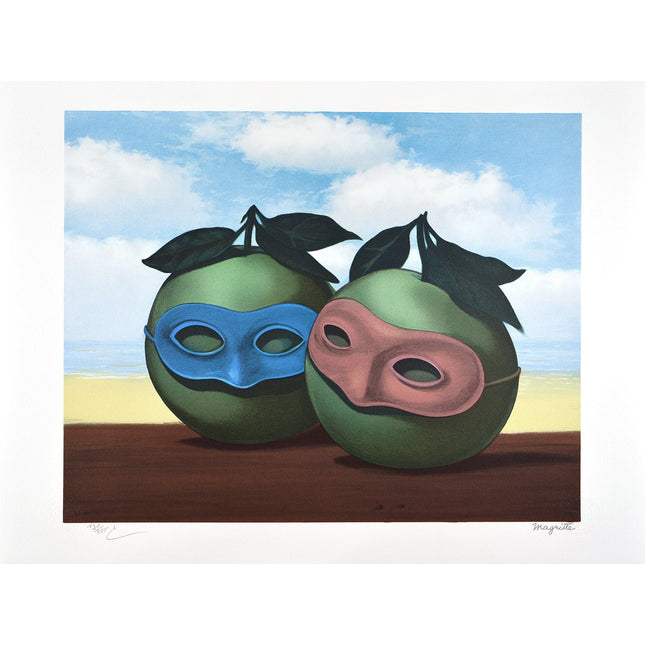René François Ghislain Magritte was born on November 21, 1898, in Lessines, a small town in the Hainaut region of Belgium. He was the eldest son of Léopold Magritte and Adeline Magritte. Although his family was middle class, his childhood was marked by an early tragedy: his mother drowned in the Sambre River when he was only 14 years old, an event that left a deep impression on the life and work of the future artist.
From a young age, Magritte showed a passionate interest in art. At the age of 12, he began his artistic training at the Royal Academy of Fine Arts in Brussels. However, his experience at the academy was ambivalent, as he felt constrained by academic conventions and sought to develop his own style.
In the early 1920s, Magritte moved to Brussels and immersed himself in the avant-garde art scene. Surrealist ideas, led by figures such as André Breton, began to gain popularity in Europe. Magritte, fascinated by the exploration of the mind and the subconscious, was drawn to the surrealist movement.
His work during this early period reflects an experimentation with surrealist techniques, but he still maintained a certain connection with realism. Paintings such as "The Window" (1925) and "The Lover" (1925) show the influence of Cubism and Futurism, while Magritte had not yet consolidated his distinctive style.
In the mid-1920s, René Magritte began to develop his signature style, which focused on the accurate depiction of everyday objects in unusual and challenging contexts. His ability to paint realistically contrasted with the conceptual unreality of his compositions, creating a striking and provocative effect.
An early and prominent example of this style is "The Treachery of Images" (1929), also known as "Ceci n'est pas une pipe" ("This is not a pipe"). In this iconic work, Magritte plays with the relationship between visual representation and reality, challenging viewers to question the nature of perception and truth.
In 1922, Magritte married Georgette Berger, a relationship that would last throughout his life and had a profound influence on his work. Throughout his career, Georgette became a constant muse for Magritte, appearing in numerous paintings, often portrayed in an enigmatic and mysterious manner.
The 1930s marked a crucial period in Magritte's life, as he became fully immersed in the Surrealist movement. He traveled to Paris and associated with key figures such as André Breton, Salvador Dalí and Max Ernst. Despite his active participation in the movement, Magritte maintained a creative independence, developing his own unique version of surrealism that focused on the faithful depiction of familiar objects in unconventional situations.
An interesting aspect of Magritte's work is his relationship with advertising and illustration. Before establishing himself as a Surrealist artist, he worked as a graphic and advertising designer, an experience that influenced his stylized approach and attention to detail. Although his Surrealist work may seem alien to conventional advertising, the influence of graphic design and advertising composition can be traced in the clarity and precision of his paintings.
During World War II, Magritte retreated to his native Belgium, and Surrealism in Europe faced significant challenges. During this period, his work took a more realistic turn, moving away from the dreamlike compositions that had previously characterized him. Paintings such as "The Art of Conversation" (1950) and "The Man in the Bowler Hat" (1964) show his focus on portraits and everyday scenes, though always with a distinctive touch of unreality.
As the postwar period gave way to postmodernism, Magritte gained international recognition for his unique contribution to contemporary art. His work influenced artists in a variety of disciplines, from music to fashion. Magritte also became a reference for later artistic movements, including pop art and conceptual art.
Throughout his career, René Magritte received numerous accolades and awards. Despite his success, Magritte was known for his reserved nature and rejected the idea of explaining the meaning behind his paintings, leaving viewers to interpret his work in their own personal way.
Magritte passed away on August 15, 1967, but his legacy lives on. His ability to challenge reality and question conventional notions of visual representation continues to inspire artists and art lovers around the world. Magritte's works, with their unique combination of technical precision and surrealist concepts, continue to invite reflection and contemplation, ensuring his place as one of the most influential artists of the 20th century.






































